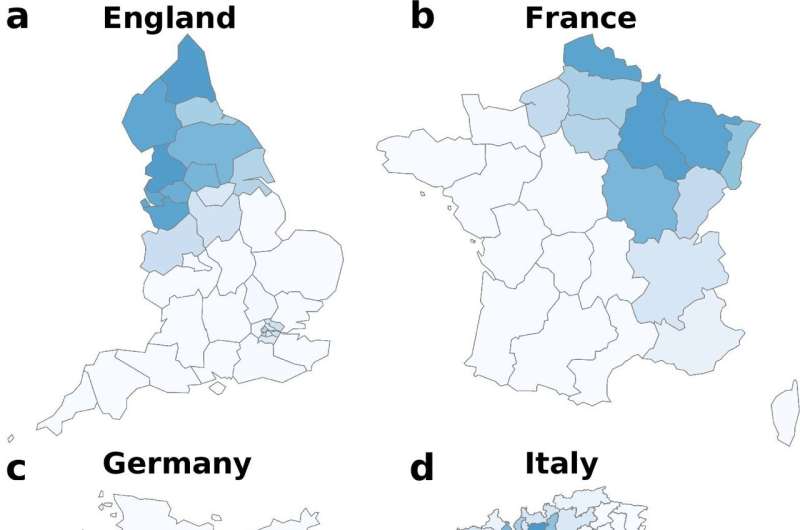Disease outbreak simulations reveal influence of "seeding" by multiple infected people

A new computational analysis suggests that, beyond the initial effect of one infected person arriving and spreading disease to a previously uninfected population, the continuous arrival of more infected individuals has a significant influence on the evolution and severity of the local outbreak. Mattia Mazzoli, Jose Javier Ramasco, and colleagues present these findings in the open-access journal PLOS Computational Biology.
In light of the ongoing COVID-19 pandemic, much research has investigated the dynamics of local outbreaks caused by the first detected cases in a population, which are linked to travel. However, few studies have explored whether and how the arrival of multiple infected individuals might impact the development of a local outbreak—a situation termed “multi-seeding.”
To examine the impact of multi-seeding, Mazzoli and colleagues first simulated local outbreaks in Europe using a computational modeling approach. To capture travel and seeding events, the simulations incorporated real-world location data from mobile phones during March 2020, when the COVID-19 pandemic began.
These simulations suggested that there is indeed an association between the number of “seed” arrivals per local population and the speed of spread, the final number of people infected, and the peak incidence rate experienced by the population. This relationship appears to be complex and non-linear, and it depends on the details of the social contact network within the affected population, including the effects of lockdowns.
To test whether the simulations accurately reflect real-world outbreaks, the researchers looked for similar associations between mobility data and COVID-19 incidence and mortality during the first wave of COVID-19 infection in England, France, Germany, Italy, and Spain. This analysis revealed strong signs of real-world multi-seeding effects similar to those observed in the simulations.
Based on these findings, the researchers propose a method to understand and reconstruct the spatial spreading patterns of the main outbreak-producing events in every country.
Source: Read Full Article


